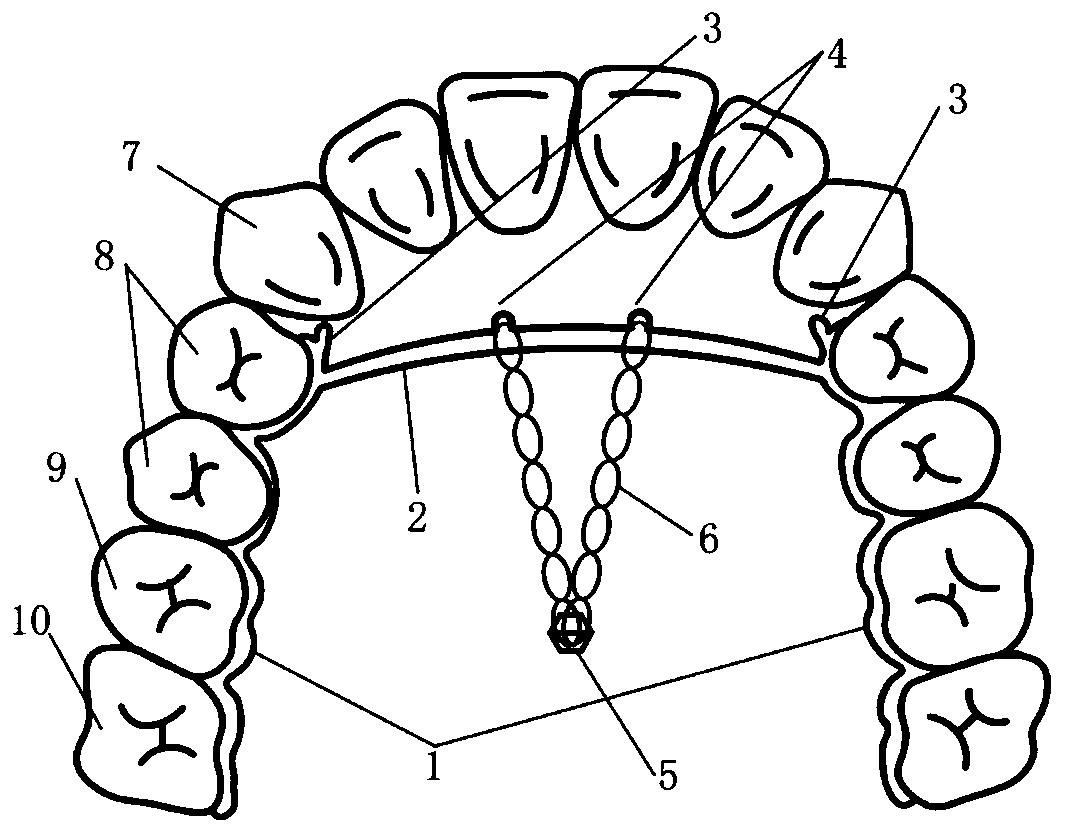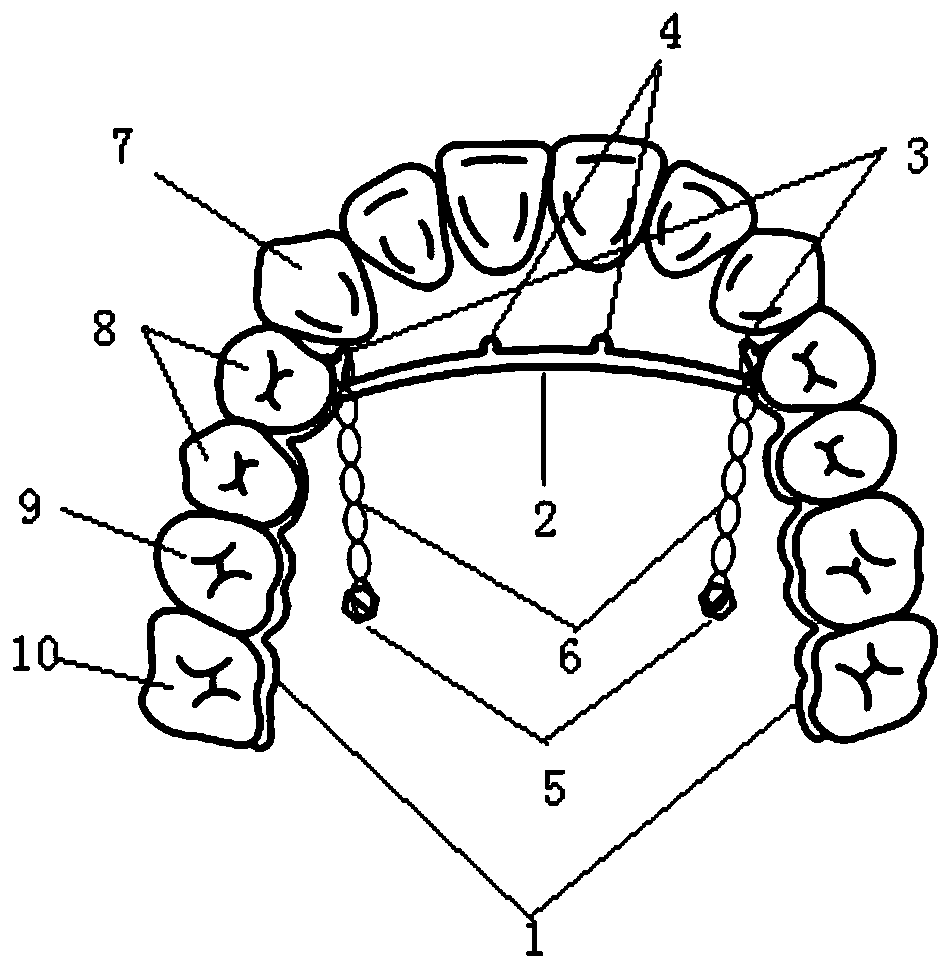One-piece molar-back-pushing device
A one-piece, connecting body technology, used in dentistry, orthodontics, prosthetics, etc., can solve the problems of molar buccal tilt, limit movement, etc., to enhance stability, improve comfort, and facilitate clinical application. Effect
- Summary
- Abstract
- Description
- Claims
- Application Information
AI Technical Summary
Problems solved by technology
Method used
Image
Examples
Embodiment 1
[0052] figure 1 A schematic structural view of the one-piece retromolar device of this embodiment is shown; figure 2 A schematic structural view of the one-piece retromolar device of this embodiment is shown.
[0053] Such as figure 1 , figure 2 As shown, the one-piece pushback molar device includes:
[0054]A pair of retainers 1 are respectively fixed on the crown-palatal sides of the premolars 8, first molars 9 and second molars 10 on both sides of the oral cavity by resin adhesive. The palatal side of the crowns of the molars, first molars, and second molars, whose shape matches the corresponding crowns and does not affect the occlusion with the opposing jaw, has a thickness of 0.4mm; the connector 2 is a round rod with a diameter of 1.5mm, and its two ends They are respectively connected to the proximal ends of a pair of retainers 1, the radian of the connecting body 2 fits the palate, and the distance between the connecting body 2 and the palatal mucosa is 2mm; the ...
Embodiment 2
[0061] image 3 A schematic structural view of the one-piece retromolar device of this embodiment is shown; Figure 4 A schematic structural view of the one-piece retromolar device of this embodiment is shown.
[0062] Such as image 3 , Figure 4 As shown, the difference between the present embodiment and the first embodiment is that there are two microscrews 5 , and they are respectively located between the palatal apex of the first molar 9 and the second molar 10 on both sides of the palate. For some patients with high-arched palatal cover, using the microscrew 5 in the palatal suture to move the molars away may bring about the effect of molar depression, so you can choose to insert between the apices of the first molar 9 and the second molar 10 on both sides. The microscrew 5 achieves a better mechanical effect on the remote movement of the molars.
[0063] When designing, fit the retainer 1 on the palatal side of the molar crown of the patient, and design the connecti...
Embodiment 3
[0067] Figure 5 A schematic structural view of the one-piece retromolar device of this embodiment is shown.
[0068] Such as Figure 5 As shown, the difference between the present embodiment and the first embodiment is that the connector 6 is a nickel-titanium extension spring.
[0069] The one-piece push-back molar device of this program, the corresponding retainer and connector are individually designed according to the patient's dental arch data, and the retainer, connector, lateral traction hook and forward traction hook are integrated through 3D printing technology Molding; fix the retainer on the palatal side of the maxillary posterior teeth with resin adhesive, use a chain ring or nickel-titanium tension spring to connect the front traction hook or the side traction hook to the microscrew anchorage of the palate according to clinical needs. Molars move away.
PUM
 Login to View More
Login to View More Abstract
Description
Claims
Application Information
 Login to View More
Login to View More - R&D
- Intellectual Property
- Life Sciences
- Materials
- Tech Scout
- Unparalleled Data Quality
- Higher Quality Content
- 60% Fewer Hallucinations
Browse by: Latest US Patents, China's latest patents, Technical Efficacy Thesaurus, Application Domain, Technology Topic, Popular Technical Reports.
© 2025 PatSnap. All rights reserved.Legal|Privacy policy|Modern Slavery Act Transparency Statement|Sitemap|About US| Contact US: help@patsnap.com



